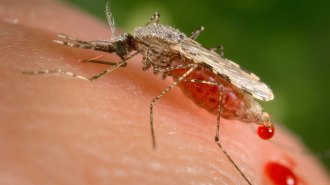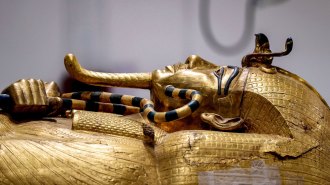News
-
 Health & Medicine
Health & MedicineCat allergies may be tamed by adding an asthma therapy to allergy shots
Adding an antibody already used to treat asthma to standard allergy shots improved cat allergy symptoms for a least a year, a small study finds.
-
 Health & Medicine
Health & MedicineThe U.S.’s alcohol-induced death rate rose sharply in the pandemic’s first year
Studies suggested cases of alcoholic liver disease rose in the first pandemic year, and new data show the death rate from alcohol use climbed too.
-
 Physics
PhysicsCrowdsourced cell phone data could keep bridges safe and strong
Accelerometers and GPS sensors in smartphones could provide frequent, real-time data on bridge vibrations, and alert engineers to changes in integrity
-
 Planetary Science
Planetary ScienceMarsquakes hint that the planet might be volcanically active after all
Seismic data recorded by NASA’s InSight lander suggest molten rock moves tens of kilometers below the planet’s fractured Cerberus Fossae region.
-
 Animals
AnimalsDeer-vehicle collisions spike when daylight saving time ends
In the week after much of the United States turns the clock back, scientists found a 16 percent increase in crashes between vehicles and deer.
-
 Health & Medicine
Health & MedicineA major malaria outbreak in Ethiopia came from an invasive Asian mosquito
Malaria may become a much bigger problem in Africa’s cities if the invasive mosquito continues to spread.
By Jake Buehler -
 Microbes
MicrobesAncient bacteria could persist beneath Mars’ surface
Radiation-tolerant microbes might be able to survive beneath Mars’ surface for hundreds of millions of years, a new study suggests.
By Sid Perkins -
 Archaeology
ArchaeologyKing Tut’s tomb still has secrets to reveal 100 years after its discovery
More of Tut’s story is poised to come to light in the coming years. Here are four things to know on the 100th anniversary of his tomb’s discovery.
By Bruce Bower -
 Animals
AnimalsHere’s how polar bears might get traction on snow
Microstructures on the Arctic animals’ paws might offer extra friction that keeps them from slipping on snow, a new study reports.
By Meghan Rosen -
 Animals
AnimalsBizarre aye-aye primates take nose picking to the extreme
A nose-picking aye-aye’s spindly middle finger probably reaches all the way to the back of the throat, CT scans suggest.
-
 Animals
AnimalsInsect swarms might generate as much electric charge as storm clouds
Honeybees flying over a sensor measuring atmospheric voltage sparked a look into how insect-induced static electricity might affect the atmosphere.
-
 Climate
ClimateWind turbines could help capture carbon dioxide while providing power
Turbulent wakes from wind turbines can concentrate CO2 from cities and factories, making it easier to remove the greenhouse gas from the atmosphere.